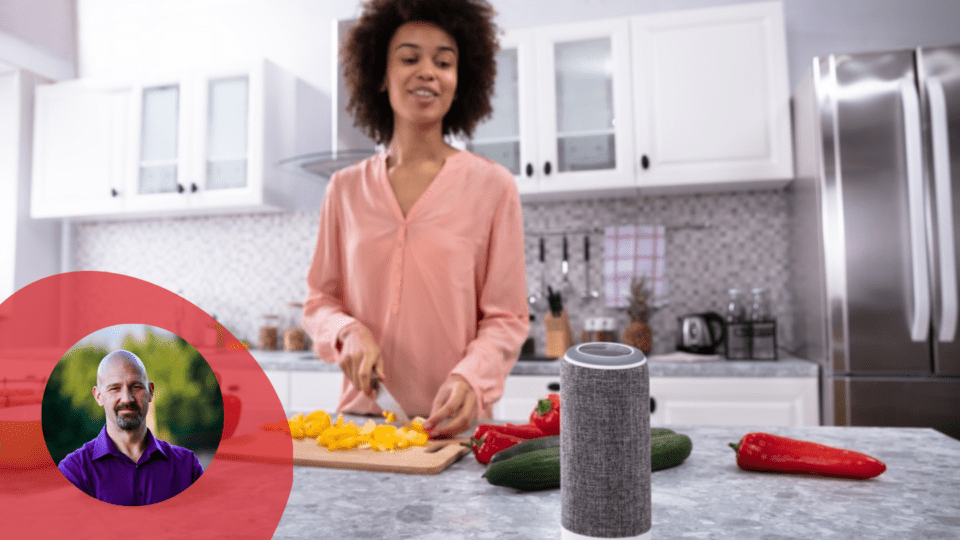By the end of this year, more than 200 million smart speakers are expected to be sold globally, led by the Amazon Echo and Google Nest devices, and that number will grow in the years ahead. Consumers are enjoying the benefits of a hands-free, voice-activated application to help cook a recipe or shop online.
A report from Capgemini Research Institute spotlighted two interesting findings:
- First, nearly three-fourths of smart-speaker usage is commerce-related: researching products, making purchases, adding items to a shopping list and checking order status.
- Secondly, brands are lagging vis-à-vis serving “conversational consumers.” Specifically, more than 20% of brands and retailers are not offering meaningful experiences through voice assistants.
Typically, conversational consumers use voice-activated texts and make inquiries on mobile devices, as well as shop and seek product recommendations with smart tools. The latter function is where brands can do more with personalized content, not only serving consumers in their everyday life but also selling products and gaining trial of new merchandise.
Developing Personalized Experiences
From a technical perspective, a lot of work is required of marketing and developers to build content for smart speakers. Brands must anticipate prompts from consumers and respond in various ways, which are then coded in on the back end.
Advertisement
Add in a layer of personalization and the operation becomes more complex. Even though brands can access data on usage, loyalty, the weather, etc. and craft responses that speak directly to consumers, they need a technology platform that can handle the complexity of the digital experiences while simplifying the process for marketers.
With the right tools, including AI to personalize connections and automate responses, marketers can also program in customized messages to initiate a conversation with consumers and also sell products.
Here are a few options to forge a connection with consumers:
- Personalized greeting. For example, when a customer opens a national coffee brand’s app on a voice assistant, the app promptly says, “Good morning, you are due for a reorder. Would you like to buy the dark roast again or try our new hazelnut flavor?”
Three things are at work here:
- Brands personalize the app to know the time of day: morning, afternoon or night, for an immediate personal touch.
- The app taps into usage rates and purchase history with a tailored offer, such as adding coffee to a shopping list.
- The app recommends a new product.
- Personalized usage. Another way for brands to enhance personalization is by monitoring consumer behavior and presenting helpful information. For example, a grocery retailer can build a relationship with customers by sharing with them how much they’re spending on cereal in a month or how much they could save by opting for a private label.
- Personalized goodbye. Just as they can personalize and promote products when consumers turn on an app or smart speaker, brands can send a personalized message when consumers turn off the gadget. For example, in the case of a loyalty program, a coffee brand can say, “Thanks for visiting. You are two purchases away from a free bag of coffee.”
Owning the Conversation
Brands running a smart-speaker experience on a monolithic legacy platform can run into a few issues that specifically hamper marketing teams. For one thing, the platform might not be capable of personalizing and innovating experiences because it adopted the technology before smart speakers were invented. Also, the outdated technology would be suboptimal in integrating personalization features.
On the flip side, composable architectures offer a world of innovation. However, the problem with some modern composable tools is that since developers are tasked with creating experiences, marketers have much less hands-on control for solid personalization.
Gratifyingly, sitting in the middle are composable platforms that give more say to marketers, who can write up personalized responses through a simple dashboard that updates the app in real time. Since they are synced with commerce platforms, composable ones enable marketers to, for example, tie messages to products to buy and add items to a list.
Modern composable platforms don’t rely on one vendor to power all the experiences a brand is cooking up. Rather, brands can plug and play various vendors with different specialties, such as personalization, inventory management or search.
This presents a huge advantage to how marketers personalize content for smart speakers. Essentially, marketers can personalize messages without developer help, giving marketers full control of the content and the process.
Composable platforms hold the potential to revolutionize how brands engage with conversational consumers, offering a seamless and tailored experience that fosters loyalty and drives sales.
Preparing for the Future
Not surprisingly, advanced communication between brands and consumers over smart speakers or IoT tools requires technical expertise. A composable platform prepares brands well for an innovative and futuristic approach for marketing campaigns while still giving marketers control of the experience.
To better interact with consumers through smart speakers and IoT, brands must serve the best experiences possible. The good news is that effective solutions are available for that purpose.
Darren Guarnaccia is President of Uniform, a provider in the emerging software category of digital experience composition platforms. Prior to joining Uniform, Guarnaccia held executive positions at Hootsuite, Crownpeak and Sitecore, where he served as head of product strategy, alliances, and analyst relations. With a proven track record of propelling exponential growth by leveraging market opportunities and building product- and revenue-driven partnerships, Guarnaccia is a respected, inspiring manager of high-performing and dedicated teams.






